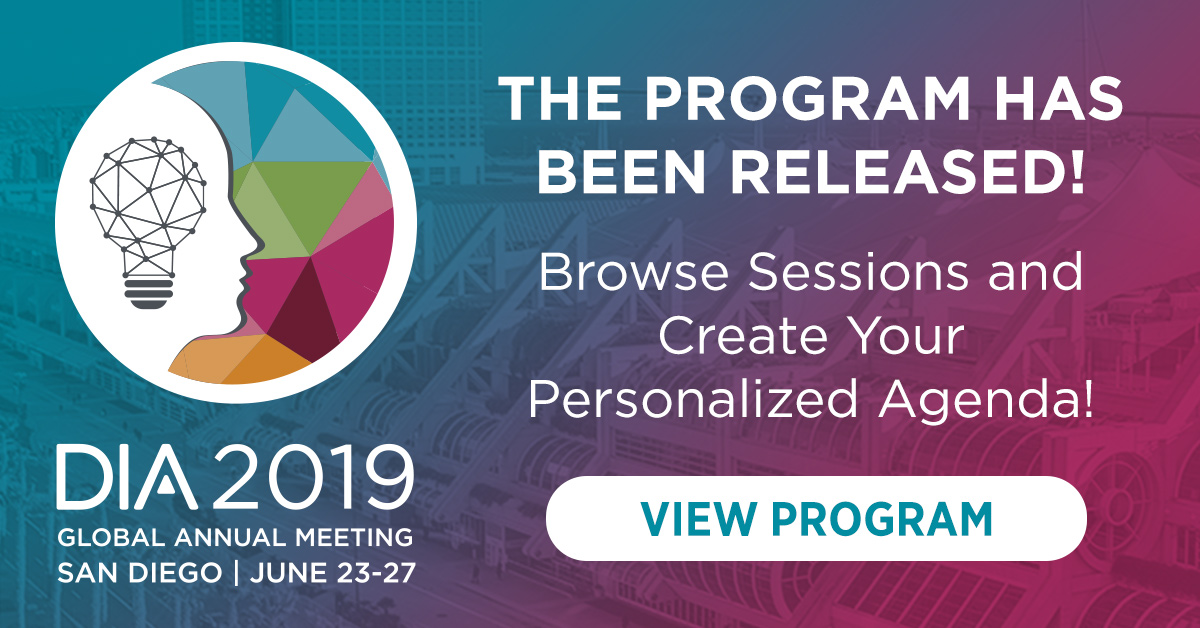March 2019 Global Forum
Table of Contents
Information is just information until it’s actionable
Around The Globe
New process leads to better outcomes for clinical trials AND patients
AROUND THE GLOBE CONTINUED
Demonstrating leadership in global scientific and healthcare innovation
YOUNG PROFESSIONALS’ CORNER
White Paper
EXECUTIVE LEADERSHIP
Vienna: The Third (Wo)Man*
Subscribe
Love Global Forum‘s new online format? Subscribe today and never miss an issue.
Executive Leadership | From the Editor-in-Chief

Alberto Grignolo, PhD
Editor-in-Chief
Global Forum
Fellow of DIA
drug development scientist, an information technologist, and a patient walk into a café while attending a conference in Vienna. The scientist orders a hot chocolate; the technologist orders a slice of strudel; the patient orders nothing. Puzzled, the scientist and the technologist encourage her to enjoy one of the many local delicacies. The patient declines and replies: “Actually, I did not want to come here at all, but you insisted. I don’t like sweets. But you never asked me if I did.”
Editorial Board
Content stream editors
Gary Kelloff US National Institutes of Health
David Parkinson ESSA Pharma, Inc.
regulatory science
Yoshiaki Uyama Pharmaceuticals and Medical Devices Agency (PMDA)
Adora Ndu BioMarin Pharmaceutical, Inc.
Patient engagement
Deborah Collyar Patient Advocates In Research (PAIR)
Lode Dewulf Servier
Value & access
Edith Frénoy European Federation of Pharmaceutical Industries and Associations (EFPIA)
Editorial Staff
Alberto Grignolo, Editor-in-Chief PAREXEL International
Ranjini Prithviraj, Global Associate Director, Content Collaboration DIA Publications
Sandra Blumenrath, Science Writer DIA Publications
Chris M. Slawecki, Senior Digital Copyeditor DIA Publications
Regional Editors
AFRICA
David Mukanga Bill and Melinda Gates Foundation
ASEAN
Silke Vogel Duke-National University of Singapore Medical School
AUSTRALIA/NEW ZEALAND
Richard Day University of New South Wales, Medicine, St. Vincent’s Hospital
CANADA
Judith Glennie JL Glennie Consulting, Inc.
Megan Bettle Health Canada
CHINA
Ling Su Shenyang Pharmaceutical University, Lilly Asia Ventures
Europe
Thomas Kühler Sanofi R&D
INDIA
J. Vijay Venkatraman Oviya MedSafe
JAPAN
Kazuhiro Kanmuri Inter-Professional, Inc.
USA
Ebony Dashiell-Aje FDA
Young Professionals Editor
DIA Membership
Bringing together stakeholders for the betterment of global health care.
Chief, Translational Biomedical Informatics, and Chief Data Officer
Duke Cancer Institute, Duke University
pen science and open data initiatives have become somewhat of a cause célèbre due in part to activities like the European Public Sector Information (PSI) Directive and Plan S which are striving to make open access publication the norm in the EU. However, these activities are the result of many years of work to push open access for publicly-funded research data, including the Human Genome Project, Genbank, PubMed, PubMedCentral, the FDA’s Information Exchange and Data Innovation (INFORMED) and Sentinel initiatives, and a long cadre of important projects too numerous to mention. Groups like Force11 have pushed for the open sharing of data, most notably through the set of FAIR principles for making data Findable, Accessible, Interoperable and Reusable. Likewise, the private sector, particularly the pharmaceutical industry, has moved more and more activities into shared space. These initiatives include Project Datasphere and the Yale Open Data Access Project (YODA) for sharing clinical research data, TransCelerate to share pre-competitive biopharmaceutical data, and Transmart for sharing analytical tools and workflows. Companies like Vivli focus on extracting value from large, shared, and accessible clinical studies.
Information is just information until it’s actionable
Adam Istas
Science Writer
DIA
he proliferation of digital health applications—and their potential service to clinical and real world research—has led biopharmaceutical companies and device manufacturers to embrace these new technologies in a variety of ways for a variety of purposes. From streamlining clinical trial processes such as patient recruitment and informed consent, to obtaining real world data (RWD) in support of regulatory submissions and value dossiers, a number of innovative applications of digital health tools have emerged over the past decade. While some have been successful (and others less so), their collective experiences and continued advances in technology offer both learnings and warning signs for healthcare product manufacturers looking to address challenges and engage with patients through digital tools. Most encouragingly, these experiences help illuminate the consensus that patient-centered design and usability are critical components for success in any digital health initiative. The following is intended to help promote a better understanding of how patient-centered principles should be at the core of a digital health program.
White Paper
![]() Podcasts
Podcasts
Chief Patient Officer
Servier
Founder and President
Patient Advocates In Research (PAIR)
Former Head of Medical
Amgen Europe
rom laboratory bench to regulatory/payer approval and real world use, medicine development has reached, perhaps even crossed, a tipping point. Today, the risk of not working with patients in the medicine lifecycle is higher than the risk of working with patients: A recent Economist Intelligence Unit report commissioned by PAREXEL found that trials using patient-centric designs were 19% more likely to be launched compared to trials that did not. Studies and product launches that failed because insights from patients were not sought remain lasting and powerful reminders of today’s new reality.
Around The Globe
How New Regulations Are Changing Product Approvals in India
New Process Leads to Better Outcomes for Clinical Trials AND Patients
Head of Clinical Development
Biocon Research Ltd.
he regulation of new drug development and approval in India has evolved significantly in recent years and has enabled the entry of important new medicines onto the market for the benefit of millions of Indian patients. The change has been gradual but steady; key success factors have included the establishment of Subject Expert Committees (SECs) empowered to evaluate complex clinical data in depth and detail and advise the Regulatory Authority.
The gold standard for studying the safety and efficacy of new medicines in development is the randomized controlled trial (RCT). RCTs are designed to answer specific disease outcome and other patient-related questions, and are usually required by regulatory bodies across the world as the basis for their approval of new medicines. Clinical research studies on human participants are designed to answer specific questions about new medicines through key considerations such as study population and design, choice of comparator(s), adequate number of subjects, efficacy end-points and statistical analysis, safety data, patient-reported outcomes, and relevance to specific countries or regions for future clinical use. These trials are conducted after the required regulatory authorities and ethics committees review and approve their study protocols, which document these considerations; this often includes providing feedback on that investigational product’s clinical development plan.
![]() Podcasts
Podcasts
Around The Globe
Regenerative Medicine Advancing in Japan
Demonstrating global leadership in scientific and healthcare innovation
Associate Professor
Division of Cardiovascular Surgery, Department of Surgery,
Osaka University Graduate School of Medicine
Chief
Division of Cell-Based Therapeutic Products
National Institute of Health Science
Founder & CEO
Inter-professional, Inc.
nnovation and collaborative initiatives have been promoted as national imperatives in the field of regenerative medicine in Japan ever since Professor Shinya Yamanaka of Kyoto University was awarded the Nobel Prize in Medicine or Physiology in 2012 for his pioneering work on iPS cells. To develop regenerative technologies and treatments, it is critical that industry, academic, and regulatory stakeholders collaboratively discuss challenges in developing these products systematically, comprehensively, and without sectional or functional borders. Non-clinical toxicology, clinical planning and development, and manufacturing processes are only a few examples of current challenges in regenerative medicine.
Learning how to identify and listen to the voices of various stakeholders (e.g., regulatory policy, healthcare system, pricing/reimbursement system, human rights and ethics, patient access and education, etc.), along with the global nature of modern healthcare, further stresses the importance of such collaboration in regenerative medicine.
Since 2016, DIA Japan has convened these and other stakeholders involved in developing cell therapy products, particularly those from industry and academia, for an annual cell therapy products symposium. In response to requests from these stakeholders and developments in this field, the 3rd DIA Cell & Gene Therapy Products Symposium in Japan in December 2018 incorporated gene therapy products in its agenda.
Young Professionals’ Corner
Investing In Your Own Career
Anastasiya Voitsik
Post-Doctoral Fellow, Rutgers/Sanofi
Investing In Your Own Career
Anastasiya Voitsik
Post-Doctoral Fellow, Rutgers/Sanofi
hen you hear about investing, you may think about savings and stock accounts. But when it comes to investing in your career, the focus may shift to education, including degrees, didactic courses, certifications, and trainings. To ensure that I would be professionally competitive after graduation, I completed a biomedical research technician training program, obtained a dual doctorate and master’s degree, and received basic life support training. These opportunities certainly helped prepare me for my career. But other opportunities with lower or even no cost have invested just as much if not more into my life.


Thanks for reading our March 2019 Issue!







